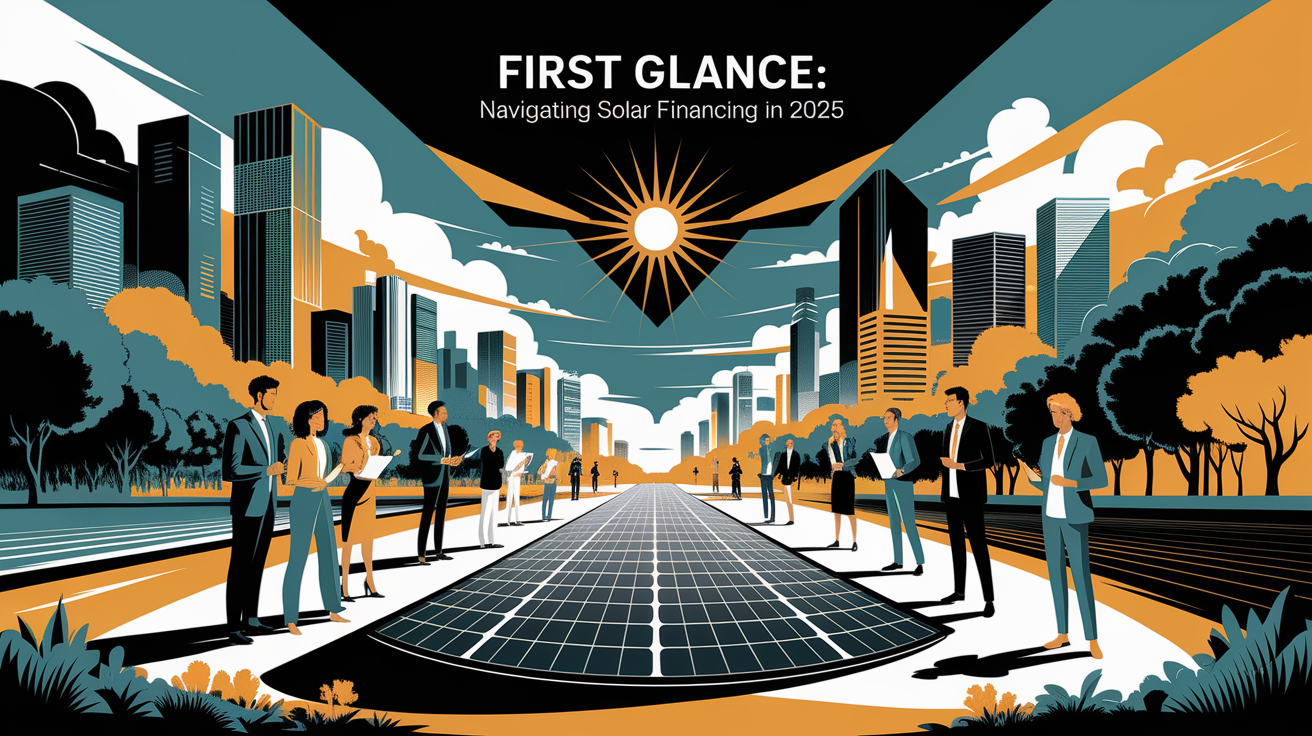Bright Financing Horizons: Residential Solar Financing Options for 2025
First Glance: Navigating Solar Financing in 2025
The residential solar market in 2025 presents homeowners with a variety of financing avenues to make photovoltaic systems more accessible. As interest in renewable energy continues to rise, so does the need for clear guidance on how to cover solar panel installation costs. The most common payment options include solar loans, solar leasing contracts, power purchase agreements (PPAs), cash purchases, and specialized programs like PACE financing. The impending expiration of the 30% federal investment tax credit (ITC) on December 31, 2025, adds urgency to financing decisions, particularly for those aiming to maximize incentives and long-term solar energy savings.

Solar Loans: Borrow and Own
In 2025, solar loans remain the most recommended financing method for homeowners who can take advantage of the ITC. With terms generally spanning 7 to 20 years—and in some cases up to 30 years through community banks—loan APRs range from about 6% to 12%, with credit unions offering competitive rates from 5.9% to 9.2%. Solar loans allow buyers to own their system outright after repayment, enhancing solar system ROI through direct energy savings and property value increases. Options include unsecured loans and secured products like home equity loans or HELOCs. While paying cash avoids interest costs, financing through loans can make residential renewable energy attainable for households without significant upfront capital.

Solar Leases and PPAs: Rental Models
Solar leases and PPAs cater to homeowners seeking zero down solar panel financing programs without the responsibilities of ownership. In a lease, the solar financing company installs and maintains the panels, and the homeowner pays a fixed monthly fee. In a PPA, payments are based on the electricity produced, at a rate agreed upon in the contract. These arrangements include maintenance and system warranties but do not permit claiming federal tax credits, and they do not build ownership equity. As ITC benefits diminish after 2025, leases and PPAs could become relatively more competitive, especially for low-income households or those with limited credit.

Cash Purchase and Home Equity: Upfront Investments
For those with sufficient liquidity or access to favorable green energy loans via home equity, outright purchase remains the most cost-effective route over the long term. Cash buyers avoid the burden of loan interest, bolstering solar financing ROI and reducing total solar energy costs. However, upfront investments can be substantial, often running tens of thousands of dollars depending on the scale of the solar installation and any integrated energy storage systems. Leveraging home equity loans or HELOCs, while technically financing, can bridge affordability for homeowners committed to ownership.

PACE Financing: Pay Over Time
Property Assessed Clean Energy (PACE) financing allows homeowners to repay solar panel and energy storage installation costs over time through an assessment added to their property tax bill. This clean energy financing mechanism can be attractive because approval is often based on property equity rather than credit score. While interest rates vary by municipality, PACE can help households with limited credit access residential solar investment opportunities. Potential downsides include restrictions on selling the home before repayment and varying state participation in such programs.
Incentives and Tax Credits: Maximize Value
Federal solar tax incentives, notably the ITC, cover 30% of qualified system installation costs for projects completed before the end of 2025. State-level solar rebates, net metering policies, and local utility credits add further value. According to industry experts, understanding your state’s policy framework is crucial for accurate solar financing calculator results. As net metering rules evolve, especially in states scaling back credits for excess generation, incentive optimization becomes an essential part of the financial equation.
Comparison Guide: Choosing Your Best Match
Selecting the best solar financing option hinges on a homeowner’s budget, creditworthiness, appetite for ownership, and eligibility for solar energy tax benefits. Broadly:
- Solar Loans: Best for those who qualify for the ITC and can manage monthly payments.
- Leases/PPAs: Suitable for those seeking predictable costs and no maintenance responsibilities.
- Cash Purchase: Recommended for households with sufficient upfront capital.
- PACE: Advantageous for property-rich but cash-poor customers, subject to local availability.
Experts recommend comparing installer quotes, reviewing solar panel warranties, and calculating total ownership costs for informed decision-making (Consumer Affairs guide).
Emerging Trends in 2025: What’s Next
Industry watchers note several shifts underway in solar financing. As interest rates stay elevated, zero down solar programs gain traction, particularly among younger homeowners. Advances in solar battery storage integration are changing cost-benefit analyses, with some financing packages bundling storage at competitive rates. Post-ITC, expect more municipal and utility-backed clean energy financing programs to offset lost federal benefits. Additionally, digital solar financing calculators and online approval models are streamlining customer decisions across diverse solar panel payment plans.
Charge Ahead: Your Solar Financing Game Plan
With the clock ticking toward the ITC deadline, 2025 is a pivotal year for residential renewable energy investments. Homeowners aiming to lock in maximum incentives should act before December 31. Begin by assessing your credit profile, home equity, and liquidity. Research solar financing companies, request multiple quotes, and run your numbers through a reliable solar financing calculator to project long-term energy savings. Whether you choose a loan, lease, PPA, PACE, or a cash purchase, the right option will align with both your financial conditions and clean energy goals—ensuring your solar installation becomes a lasting contributor to household savings and a greener grid.







